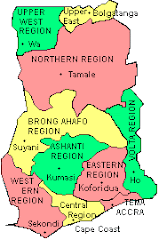When you think of a village in rural
Without getting into a discussion into why we think of certain things, I have a hard time deciphering where the village begins and where it ends, and what a village actually is. The place I stayed, ‘the village’, wasn’t isolated or far from “civilization” it is a community comprising of spatially separated homes by fields, dirt roads and foot paths, boreholes to pump safe clean drinking water shared by everyone, no electricity, and where just about everyone greets everyone. This isn’t the most detailed description, but how many of you reading this will actually sit here and read a 5-10 page description? Anyways, the home that I stayed in judging by my observations was a little better off than others but not as wealthy as some. The courtyard, I guess you could call it, was concrete instead of earth, they had zinc metal roofing on all the rooms except for the one I slept on, and they have a solar panel:

The solar panel only powers 3 lights and an outlet that can only handle a radio or black and white TV, not powerful enough to recharge a cell phone – the batteries are weakened since they are about 4 years old, a common problem with solar power. I think Peter, the father, said he paid around 300
One of my favourite things about staying in the village was sleeping under the stars up on the roof of an older style room:
rooftop camping
I had the chance to lie under a sky full of stars every night with a cool fresh breeze carrying the scent of dew and millet crops (similar to corn field smell). It was incredible to wake every morning to a cool breeze and beautiful sunrise over the millet fields:
I’ve mentioned millet quite a bit because it’s the main food staple in this village as well as the district and maybe even region. We ate millet every day, mainly in the form of TZ with leafy stew and a couple times in the field we had it in grinded floury form with water added:

We also ate rice, bread and tea, guinea fowl (similar to a chicken), and gari which is kinda like cold sugary oatmeal, pretty tasty! Millet is very nutritious and suited to the environment so fertilizer isn’t needed, and the stocks are used after the harvest for thatched roofs and to make fences for dry season gardens to keep animals out. Here’s a pic I took as we made our way along a path between millet fields on our way to weed the groundnut field (another nutritious staple suited to the environment not needing fertilizer):


more pics are yet to come!










Hi Brian! :)
ReplyDeleteI just spent a good while catching up on your life in Ghana! It sounds like you're really starting to fit in there! I'm super proud of you friend!
Riam